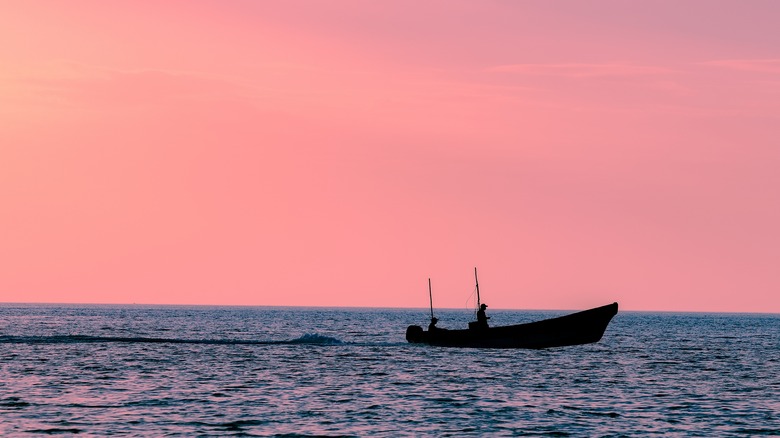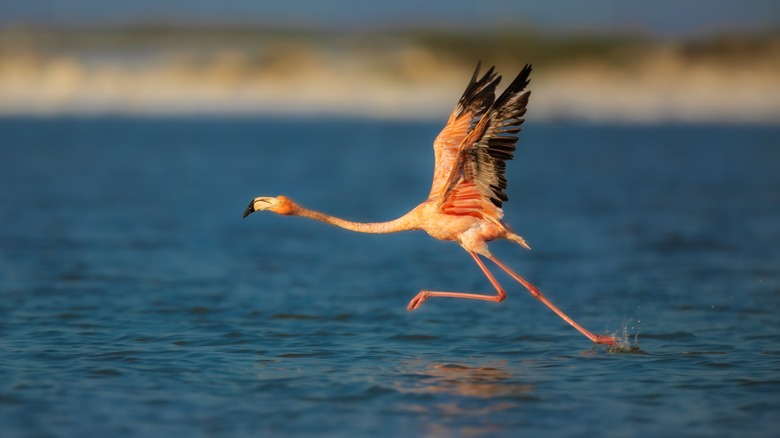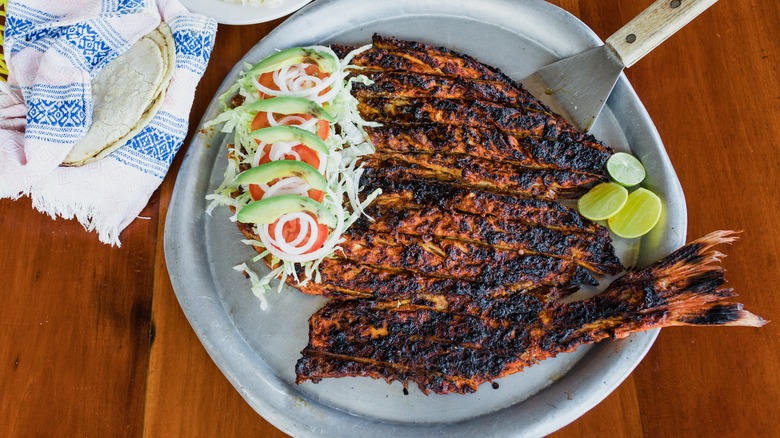Situated Along The Gulf Of Mexico Is A Sleepy Beach Town Famous For Flamingos And Incredible Restaurants
The Yucatán Province of Mexico, which sits on the east coast jutting into the Gulf, is full of surprises, culture, and fun. One such surprise is hidden next to a sleepy fishing village sandwiched between the ocean and a protected biosphere reserve. Celestún, which is just an hour and a half from the province capital and one of Mexico's safest cities, Merida, is home to thousands of peculiar pink flamingos that live in the mangroves and salt-flats of the Reserva de la Biósfera Los Petenes. There are as many as 35,000 flamingos raising their young in the sheltered area, and taking a motorboat or kayak trip to see them has to be one of the most unique things you can add to your Mexico itinerary.
For a remote little town, Celestún is surprisingly easy to reach. If you want to base yourself in Yucatan to experience all of the state's culture, wildlife, and some of the most underrated islands in Mexico, then you can fly directly from multiple major cities in the U.S. to Merida International Airport. Transferring to Celestún is simple, either by taking a tour, hiring a car, or even getting the bus (though this takes around three hours). You can also get there from Tulum or Cancún by either train, bus, or car.
Marvel at thousands of pink flamingos in this Yucatan town
If you're only heading to Celestún for the day, then you'll want to arrive early. The wildlife within the biosphere reserve is most active in the early morning, and the majority of tours will set off before sunrise. There's a bit more flexibility if you decide on a powerboat tour, but if you're opting for an adventurous kayaking trip, then it's likely you'll have set off by 5:30 a.m. or 6 a.m. Tickets can be bought online, or you can go down to the pier for a slightly better deal. At the time of writing, trips can cost between $110 to $180, depending on how long you want to spend on the water, if you're hiring a guide, or what style of boat you take.
On your tour, you can see the flora and fauna of the region, including herons, kingfishers, crocodiles, and flamingos. From April to July, and October to February, is when you'll see the most of these feathered friends. The mangrove swamps are a vital part of the ecosystem, protecting the wildlife and the lands and can sometimes look extraterrestrial. Dense, twisting branches and ochre colored water will suddenly open up to crystal blue lagoons, like the Ojo de Agua, where you can take a dip. Tours will also regularly stop at one of Yucatan's vibrant pink lagoons, full of wildlife and unforgettable views.
On the opposite side of town is the beach. It's a beautiful stretch of sand covered in gorgeous shells. If you spend an evening there, you will be treated to one of the Gulf of Mexico's (also referred to as the Gulf of America) famous sunsets and could even spot pelicans diving or dolphins jumping.
Where you should eat on your trip to Celestún
The cherry on Celestún's cake is that it doesn't disappoint when it comes to food. Mexico has some of the best food in the world, and the town's local establishments serves it up on platters with Yucatan flare. At local restaurants, you will find delicacies like lime soup, grilled pork, and stuffed cheese. With the town being so close to the gulf, there is fresh, delicious seafood around every corner.
For breakfast, Restaurant Gutierrez Dolphin on the beachfront is popular amongst travelers. Alternatively, you could head to Casa Peón to try huevos motuleños, a regional breakfast consisting of eggs, tortillas, tomatoes, and cheese. On Saturdays, it also has live music, making it a popular spot for tourists and locals alike.
For dinner, Los Pampanos, which also has beach views, serves up classic Mexican fried fish and ceviche. La Palapa just down the street offers a multitude of seafood befitting of its coastal location. To truly dine like a local, the municipal market in the center of town has to be on your itinerary. There are plenty of street food stalls working with the region's quintessential ingredients, like sour oranges. La Chabelita, a diner inside the market, makes seafood omelets in a sauce of these fruits, as well as local dishes like panuchos, stuffed bean tortilla, and shark salbutes, a type of deep-fried taco. Sampling these foods is the best way to connect with the way of life in this sleepy but special town.


